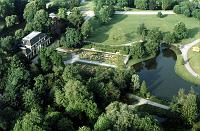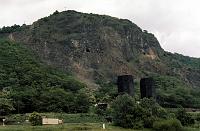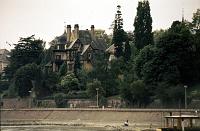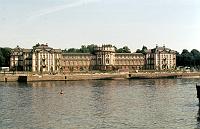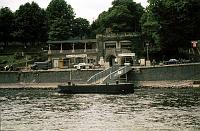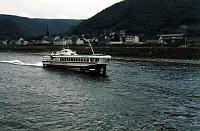




bridge_at_Remagen [5 of 38]
The Ludendorff Bridge was a railroad bridge across the Rhine in Germany, connecting the cities of Remagen and Erpel. The bridge is famous for its capture by Allied forces in the Second World War. The bridge was an important strategic point during WWII because it was the only remaining bridge which led over the Rhine River into Germany and Berlin. During Operation Lumberjack, on March 7, 1945, troops of the U.S. Army's 9th Armored Division reached one of the two intact bridges over the Rhine (a railway bridge in Wesel (today NRW) was the other one), after German defenders failed to demolish it, despite several attempts. Sgt. Alexander A. Drabik of Holland, Ohio was the first American soldier to cross the bridge, thereby becoming the first American soldier to cross the Rhine River into Germany; Lt. Karl Timmermann was the first officer over the bridge. By the Allies, this was hailed as the "Miracle of Remagen." General Eisenhower called the bridge "worth its weight in gold." It remained intact, but severely weakened, despite several further German efforts to destroy it, such as the first tactical use of a V-2. 8,000 men crossed it in the first 24 hours alone.
A large sign was put up on one of the stone towers reading "CROSS THE RHINE WITH DRY FEET COURTESY OF 9TH ARMD DIVISION." The sign is now on display at the Patton Museum of Cavalry and Armor at Fort Knox, Kentucky, above an M26 Pershing tank, a type used in the battle.
Hitler's reaction was to court-martial five officers, four of whom, Major Hans Scheller, Lieutenant Karl Heinz Peters, Major Herbert Strobel and Major August Kraft, were quickly executed. The fifth one, Captain Willi Bratge, was convicted and sentenced in absentia, having become an American prisoner of war by this time.
Ten days after its capture, the bridge collapsed, killing 28 U.S. army engineers, and wounding 93 others working to strengthen the bridge. However, by then the Americans had established their position on the far side of the Rhine and had additional pontoon bridges in place. [Wikipedia]. On our cruise, a veteran who had been there pointed it out to us.


